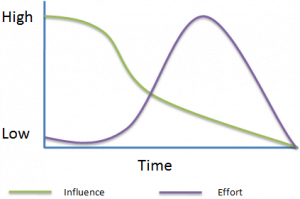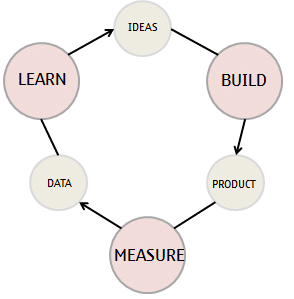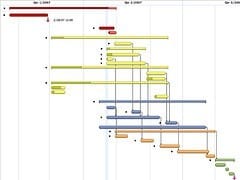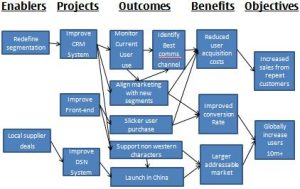In the part 3 of this series, Identifying Benefits, we looked at creating Objectives and from these, creating Benefits. You may remember that in order for a Benefit to be realised there needs to be some form of deliverable, that we refer to as an outcome. Outcomes are delivered by projects and programs. You can think of an outcome as describing specific aspects of the future state which need to be in place for the objectives and benefits to be achieved. Each outcome should describe how it is different from the current state. Typically this will mean an improvement of some sort.
Projects and programs don’t just happen, they need to be enabled in some way, for example, by making use of existing resource in the organisation. In Benefits Management terminology we refer to this as the enable for the project. Now that we understand that enablers are used to create projects and programs which then create outcomes, and that these outcomes result in benefits and objectives we are ready to create a Benefits Dependency Network (BDN).
What is a Benefits Dependency Network?
A BDN is a causal network diagram that connects the five pieces of information we have been looking at in this series of articles, namely:
- Objectives: the desired end state
- Benefits: the benefit to the organisation of the end-state
- Outcomes: specific aspects of the end state
- Projects: need to be undertaken to produce outcomes
- Enablers: used to facilitate projects and programs
Why do we need a Benefits Dependency Network?
A BDN is useful as it helps project and program managers keep the focus on benefits realisation during the program execution. It also allows variations of the project or program to be assessed for their impact on benefits realisation.
A well constructed BDN can be used to tell the story of the project or program in a visual way. In one diagram it shows why the program or project is needed, what objectives it aims to achieve, how the organisation needs to change, and what projects need to be undertaken to achieve the objectives.
A BDN can be read from right to left or from left to right:
- When read from right to left the BDN will show the logic behind the design of the project or program, showing the conditions necessary to achieve the objectives. As such it forms the foundation upon which the project or program plan can be built.
- When read from left to right the BDN will show the business justification for undertaking the program, and what projects or programs need to be undertaken to achieve those business benefits.
A Benefits Dependency Network helps us to identify any critical paths and can be used as the basis for creating the program plan. It enables us to have a discussion about the relative contributions of the different projects making up the program and thus enables us to make the right decisions when it comes to allocating resources to projects.
As described previously, the BDN links Enablers, Projects, Outcomes, Benefits, and Objectives together:
This can be read right to left in the following way:
Or left to right as follows:
In the next post in this series I’ll walk you through a complete example of creating a simple Benefits Dependency Network so that you’re equipped with everything you need to create your own BDN.









